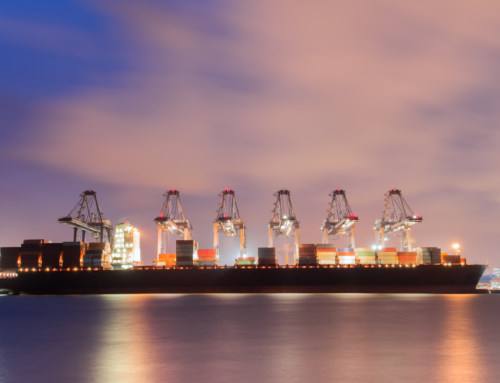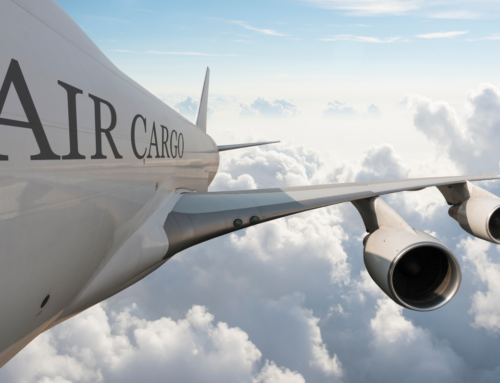How High Will Ocean Freight Rates Go After US-China Tariff Reduction—and What It Means for UK and Global Shippers
The US-China trade relationship has always been a cornerstone of global commerce, but also a persistent source of disruption. The latest twist – a 90-day agreement to reduce tariffs on Chinese goods entering the US from 145% to 30% – has once again injected volatility into global supply chains.
While many headlines focus on the trans-Pacific implications, this is not just a US-China story. The effects are being felt globally, including by UK importers, European exporters, and businesses relying on steady, affordable freight capacity.
At Hawley Logistics, we’re looking beyond the obvious questions, like how high will ocean freight rates go, and exploring what this means for the wider freight market and for UK and international shippers.
The US-China Trade Flashpoint: A Tariff Truce or a Temporary Fix?
The decision to reduce tariffs came as a surprise in early May. It followed months of escalating trade tensions between the world’s two largest economies. Accusations of unfair subsidies, technology theft, and geopolitical posturing had pushed tariffs to unprecedented levels, with many Chinese goods facing over 100% duties when entering the US.
The 90-day reprieve is designed to cool the diplomatic temperature – but it’s also created a logistical firestorm.
US importers now have a limited window to bring in goods at drastically reduced duty levels, and they are moving quickly. That’s why rates on the China–US East Coast route are soaring, with some all-in quotes reaching $7,000 per FEU, up from the $2,600–$3,100 range just weeks ago.
Why This Matters Beyond the US and China
This isn’t a siloed disruption. The global nature of ocean freight means that pressure in one trade lane quickly spills over into others. Here’s how the tariff cut is already affecting global freight markets:
1. Capacity Reallocation
Carriers are diverting vessels and equipment to meet demand on the China–US lanes. This creates container shortages and reduced vessel space on other routes, including Europe–Asia and Asia–UK.
2. Rate Volatility
With shipping lines chasing high-paying US-bound cargo, rates on traditionally stable lanes are under pressure. UK importers from China or Southeast Asia are now seeing rising spot rates, despite not trading with the US.
3. Congestion Risks
Major ports in China, such as Yantian, Ningbo, and Shanghai, are experiencing surges in export volumes, creating congestion risks that could delay shipments even on non-US routes.
How High Could Rates Go?
The honest answer? As high as shippers are willing to pay.
When the ‘Liberation Day’ announcement was made in May, some businesses immediately switched to air freight to avoid tariffs, despite far higher costs. That sets a precedent: if tariffs are the alternative, shippers will pay premium rates.
Market intelligence from Xeneta shows that:
- Spot rates to the US West Coast jumped 8% from 14 May to 21 May.
- Rates in the 75th percentile of the market, representing the fastest-acting shippers, rose by 18%, from $2,620 to $3,100 per FEU.
These figures are rising by the week. But it’s not just about price, urgency is driving decisions, and that urgency distorts markets globally.
Strategic Advice for UK and International Shippers
As a UK-based freight forwarder working with businesses of all sizes, Hawley Logistics recommends shippers act now to limit risk and stay ahead of the curve:
1. Don’t Assume You’re Unaffected
Even if your goods aren’t going to or from the US or China, you are part of the same container ecosystem. If Asia-Europe routes are your lifeline, expect knock-on effects from vessel and container shortages.
2. Plan Shipments Earlier Than Usual
The 90-day window will trigger frontloading – pulling forward the usual Q3 peak season into early summer. Plan accordingly.
3. Watch Long-Term Contract Commitments
If you’ve recently signed a long-term freight contract, make sure you understand your Minimum Quantity Commitments (MQCs). Exceeding these might push you into the spot market, where rates are rapidly escalating.
4. Leverage a Forwarding Partner with Market Insight
At Hawley Logistics, we provide up-to-the-minute intelligence and flexible solutions. Whether it’s mode-switching, alternative routings, or negotiating rate stability, we’re here to help clients respond, not react.
Longer-Term Outlook: A Sharp Peak, Then a Steady Descent?
Unlike Red Sea disruptions or COVID-era chaos, this tariff-driven demand surge has a clear expiration date.
Once the 90 days are up and the US decides on its next move, demand will likely fall. Tariffs may not bounce back to 145%, but even a partial reinstatement will deter over-importing. Once inventories are stocked, demand will cool. When that happens, rates are expected to soften quickly – possibly to levels not seen since late 2023.
But that doesn’t mean smooth sailing. Carriers may respond by withdrawing capacity again, triggering another cycle of imbalance.
Stay Prepared
Global trade is increasingly shaped by geopolitics, not just economics. The US-China tariff reset is a clear example of how fast things can change, and how essential it is to have a freight partner who can guide you through the chaos.
Whether you’re a UK business importing from Asia or an international brand shipping across continents, Hawley Logistics offers the clarity, foresight, and agility to help you stay one step ahead.
If you’re concerned about current market rates or upcoming shipments, now is the time to talk to our team.




